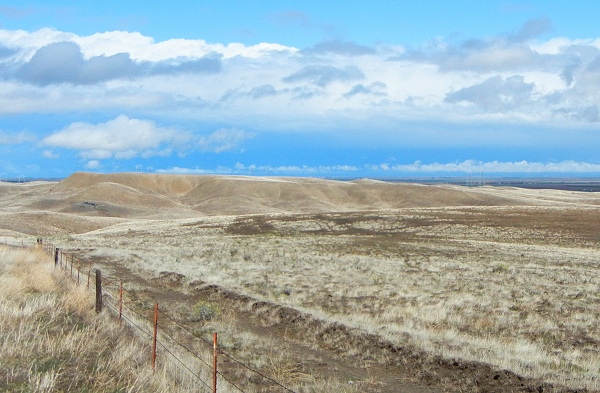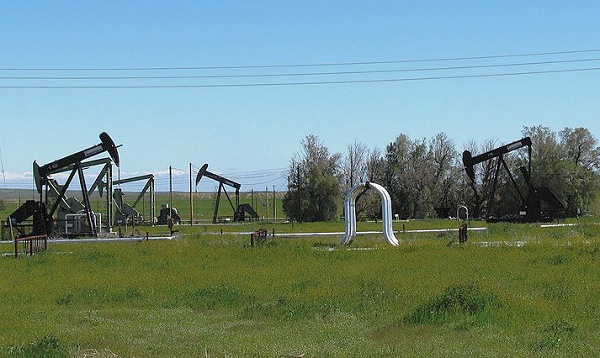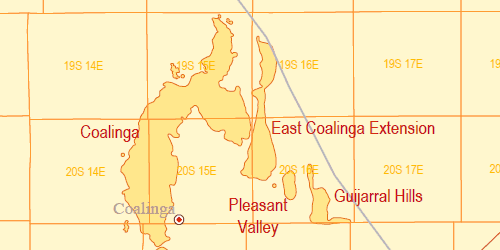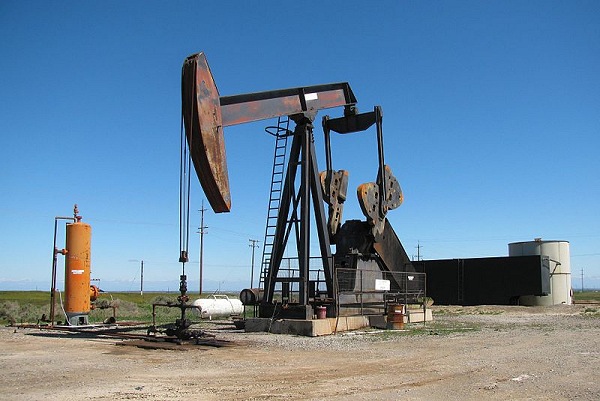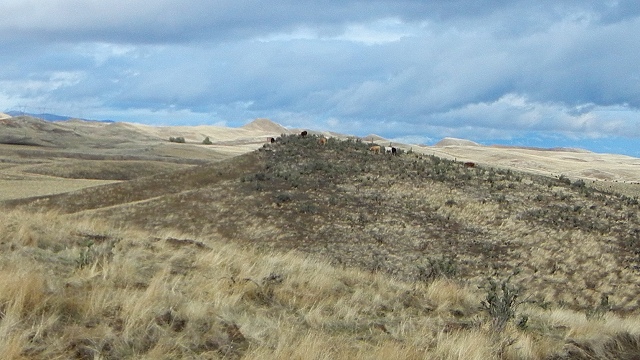
Driving Interstate 5 through the Central Valley, I find something to like on every mile except one: the smelly vicinity of the Harris Ranch feedlot north of Coalinga. This is how you can avoid it and enjoy some geology for an hour or so.
Assuming you're heading south, the key is to get off of I-5 about 10 miles before the feedlot, at the Route 33 North/Derrick Avenue exit. Think of Derrick as old Route 33, because 33 actually joins I-5 here for a few miles before exiting to the right and meeting Derrick again farther south. See if that makes sense on the geologic map below. This side trip follows 33 into Coalinga and then straight east to the interstate, crossing some interesting structure and a couple of oil fields.
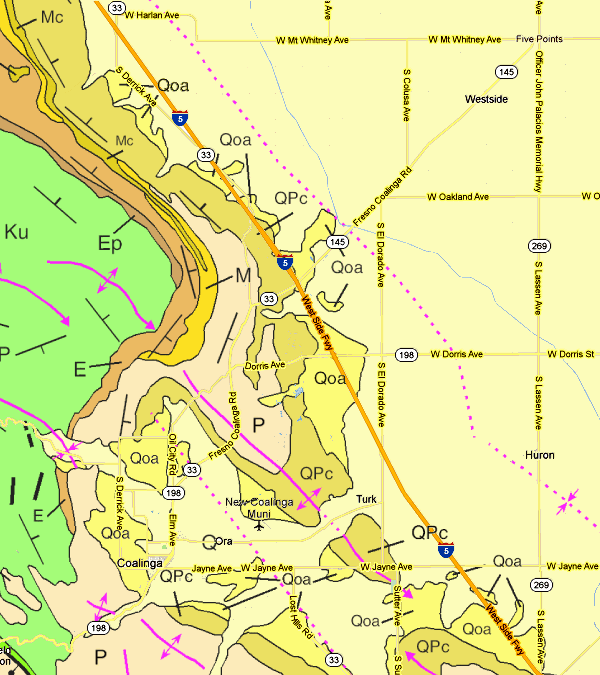
Derrick Avenue runs for a while through orchard lands parallel to I-5, crossing it twice. Hang in there: it eventually veers away into the Big Blue Hills, as these foothills of the Coast Range are called, out of earshot of the big freeway and smellshot of the big feedlot.
The country here is rolling semidesert, marginal rangeland. The ground underfoot was muddly seafloor for many millions of years, until quite recently in geologic time, around 5 million years ago. Then slow compression across the San Andreas fault raised the Coast Range, buckling these sediments into arching folds. The upward-buckling folds are called anticlines, scientific Latin that means "sloping apart." (Downward-warping troughs, like the one running the length of the Central Valley's western edge, are called synclines.)

